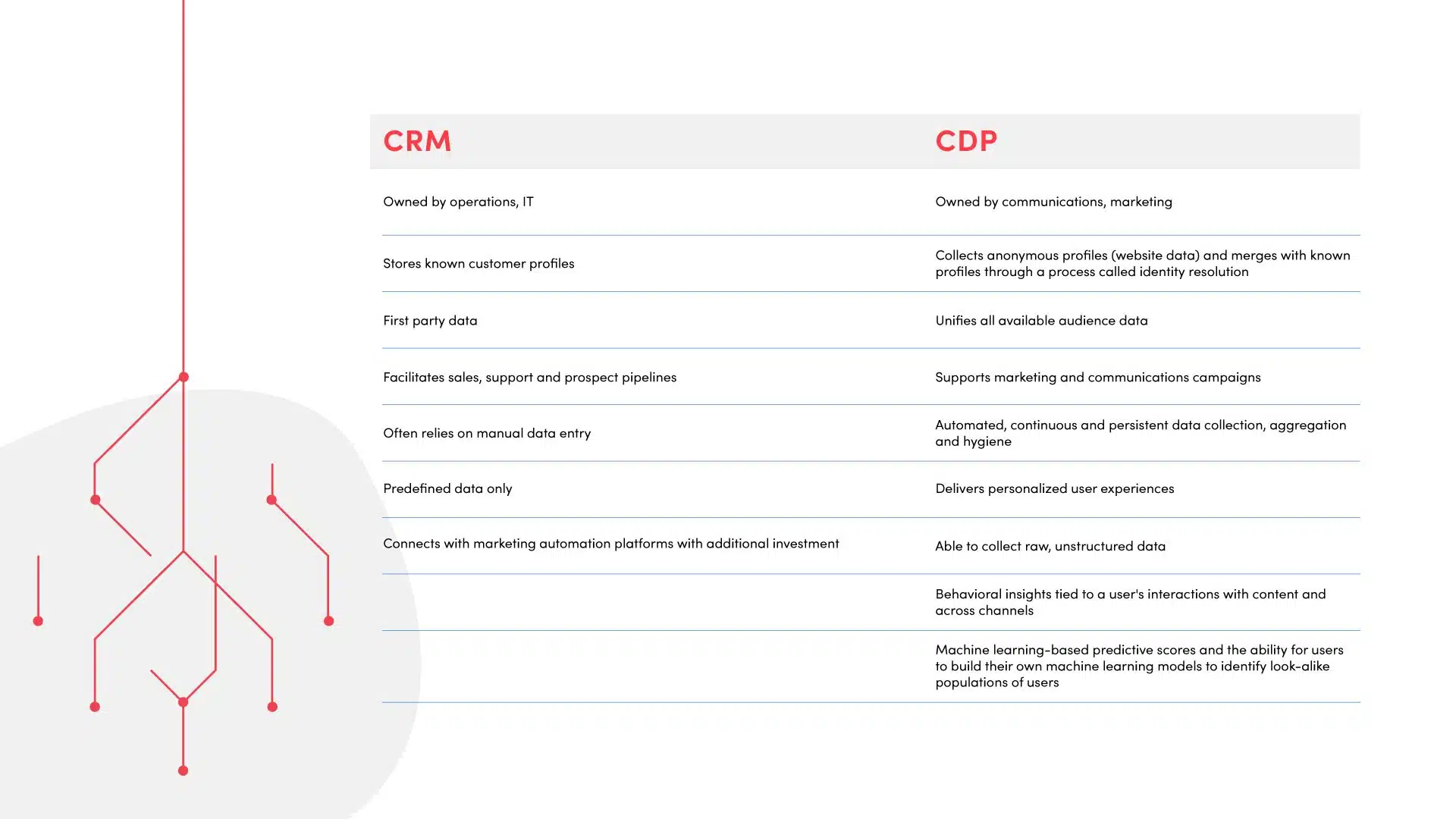CRMs, CDPs, MAPs — the acronyms for tools available to business teams are dizzying, and they often fall into the purview of IT.
For a long time, communicators and PR pros didn’t have the ability to make data- or technology-related decisions. We’ve always been responsible for creating compelling messages to connect with people and inspiring an emotional response that moves people to action. That core role hasn’t changed, but the tools available to help us succeed have transformed entirely.
Higher expectations from customers lead to increased demand on communicators to deliver hyper-personalized outreach. Unlike a CRM, a CDP enables us to understand the whole person and effectively reach them based on their individual preferences.
Previously, organizations could rely solely on customer relationship management systems to catalog interactions with stakeholders.
Similar to a Rolodex, a CRM stores customer contact information and basic details that often rely on manual entry by business, operations or sales teams. CRMs now need to be supplemented with other tools because of the demand for more real-time, integrated data about a customer’s interactions. This type of information can’t possibly rely on manual entry and requires a more sophisticated approach that leans on data science, artificial intelligence and machine learning.
Enter the customer data platform. CDPs are built for communicators and marketers, not IT, and they are the solution to many of the challenges we face today:
- How can I truly understand my audiences?
- What messages resonate with them?
- What is the best way to reach them?
- What time of day are they most engaged?
- What is their history of interaction with my organization?
We’ve used a CDP to power our work on behalf of clients for years, and the capabilities have enabled us to deliver exceptional results. Unlike a CRM, a CDP enables us to understand the whole person. This is more important than ever, because we need to focus on the holistic audience journey to build long-lasting relationships with the people we reach with our campaigns.
Using our CDP, we append customer data from CRMs with an individual’s interactions on social media, email marketing, website activity, transaction history and content affinities into one persistent, unified profile of the person. This profile is updated in real time and requires no manual entry.
We use this information to create rich target audience segments to use in communications and marketing campaigns. We then develop behavior-based journeys for audiences to achieve our clients’ goals, serving target individuals with the next best experience based on their individual preferences.
Although the campaign’s end goal is the same (make a donation, cultivate a customer, contact a lawmaker, become a member), the pathways for people to reach that goal are countless and happen simultaneously. This is a capability we could never execute without the power of technology that uses artificial intelligence and machine learning.
Clients often ask us, is my CRM enough? Our answer: no.

If moving people to action is the goal, we must harness the power of all the data and technology at our fingertips to connect people with the messages that are most meaningful to them.
Because brands are using these tools every day to refine how they reach customers, people now expect organizations to tailor communications to their individual preferences. Higher expectations from customers lead to increased demand on communicators to deliver hyper-personalized outreach. The risk of continuing to operate in a world where one size fits all leads to your messages getting lost in the abyss, making communications and outreach programs obsolete for your organization.
Organizational decision-making processes around these tools are still lagging, with many companies assuming IT is equipped to make strategic decisions without truly understanding the challenges communicators are facing. Communicators no longer have the luxury of delegating technology decisions and must demand a seat at the table alongside IT, marketing and business leadership. The stakes are too high, and communicators need to advocate for better access to audience data to compete for people’s attention and do their jobs effectively.
If you are interested in learning more about how we partner with clients to leverage the power of technology for audience engagement, connect with us.




